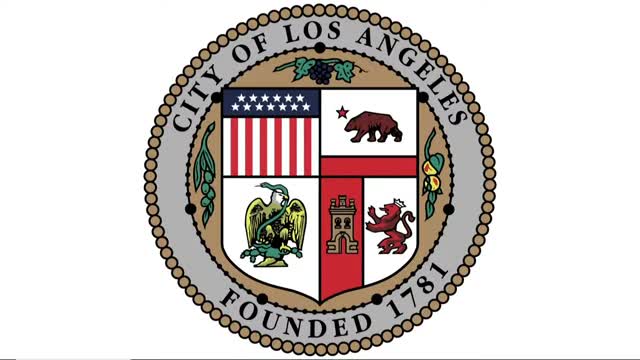Los Ángeles lanza plan de acción para combatir contaminación por PFAS en el agua
This article was created by AI summarizing key points discussed. AI makes mistakes, so for full details and context, please refer to the video of the full meeting. Please report any errors so we can fix them. Report an error »

In a recent meeting of the Energy and Environment Committee in Los Angeles, officials discussed critical strategies to ensure the safety of the city’s water supply, particularly in relation to the presence of PFAS (per- and polyfluoroalkyl substances). This meeting highlighted ongoing efforts to address contamination issues and develop comprehensive action plans aimed at protecting public health and the environment.
One of the key topics was the identification and monitoring of PFAS levels in the city’s water treatment systems. Officials from the Elisan division reported that while conventional water treatment methods have proven ineffective in removing PFAS, alternative advanced treatment technologies, such as reverse osmosis and activated carbon, are being explored. These methods have shown promise in reducing PFAS concentrations, but further research and implementation are necessary.
Karina González, a member of the task force addressing these issues, emphasized the importance of understanding the sources of PFAS contamination. The task force is working to identify whether residential, commercial, or industrial users contribute most significantly to the problem. Additionally, they are developing a monitoring plan to assess PFAS levels and concentrations in the water supply.
The committee also discussed the need for public education regarding PFAS, including how these substances enter the water system and the products that may contain them. This outreach is crucial for raising awareness and empowering residents to make informed choices.
As part of their proactive approach, the committee is considering new regulations and budget allocations to tackle PFAS contamination effectively. They are also exploring innovative destruction technologies that could break down PFAS compounds rather than merely separating them from water.
The discussions at this meeting reflect a growing commitment by Los Angeles officials to safeguard the community’s water supply and address environmental health concerns. As these initiatives progress, residents can expect ongoing updates and opportunities for engagement in efforts to ensure a safe and sustainable water future for the city.
One of the key topics was the identification and monitoring of PFAS levels in the city’s water treatment systems. Officials from the Elisan division reported that while conventional water treatment methods have proven ineffective in removing PFAS, alternative advanced treatment technologies, such as reverse osmosis and activated carbon, are being explored. These methods have shown promise in reducing PFAS concentrations, but further research and implementation are necessary.
Karina González, a member of the task force addressing these issues, emphasized the importance of understanding the sources of PFAS contamination. The task force is working to identify whether residential, commercial, or industrial users contribute most significantly to the problem. Additionally, they are developing a monitoring plan to assess PFAS levels and concentrations in the water supply.
The committee also discussed the need for public education regarding PFAS, including how these substances enter the water system and the products that may contain them. This outreach is crucial for raising awareness and empowering residents to make informed choices.
As part of their proactive approach, the committee is considering new regulations and budget allocations to tackle PFAS contamination effectively. They are also exploring innovative destruction technologies that could break down PFAS compounds rather than merely separating them from water.
The discussions at this meeting reflect a growing commitment by Los Angeles officials to safeguard the community’s water supply and address environmental health concerns. As these initiatives progress, residents can expect ongoing updates and opportunities for engagement in efforts to ensure a safe and sustainable water future for the city.
View full meeting
This article is based on a recent meeting—watch the full video and explore the complete transcript for deeper insights into the discussion.
View full meeting